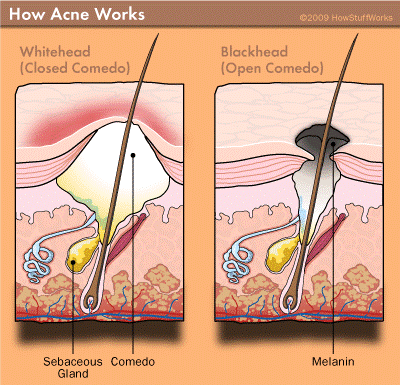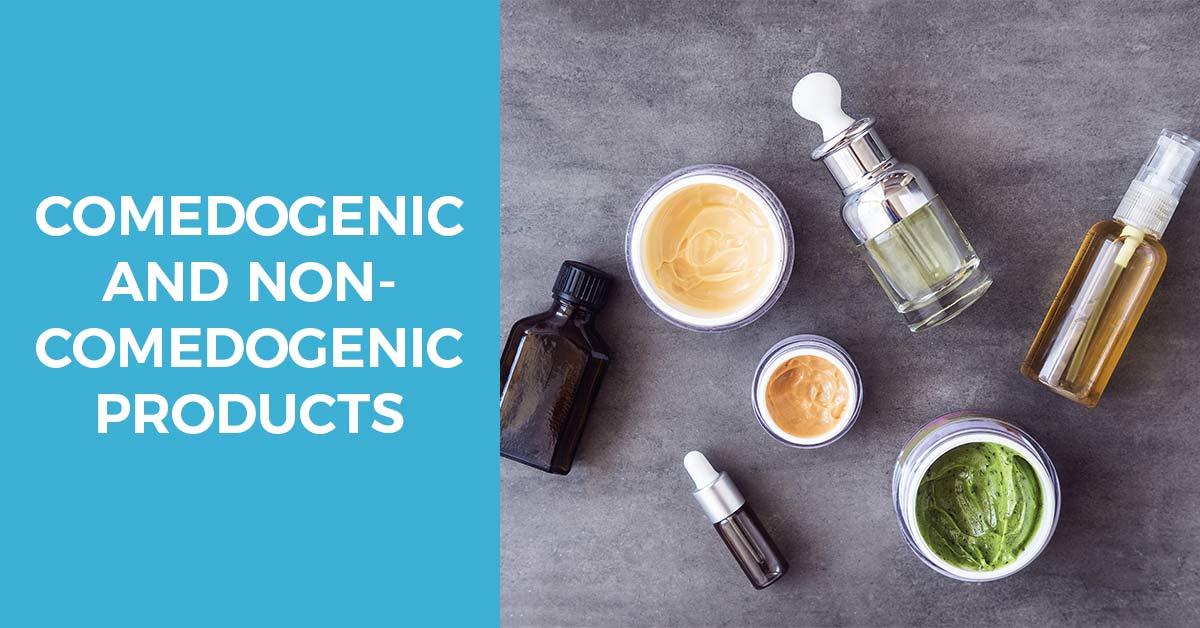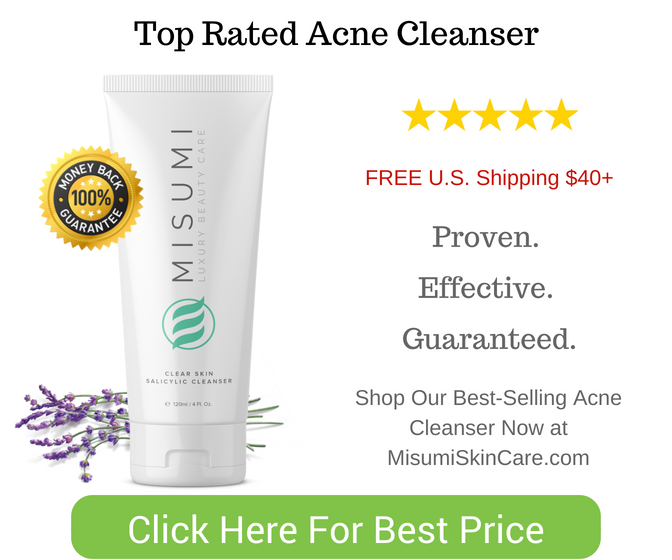Contents
With so much variable information about acne and acne combating products on the web, you’ve surely come across articles/comments/reviews/feedback claiming that many skincare products may cause you to breakout. A lot of those comments specifically refer to comedogenic ingredients present in many products, causing so much uncertainty and doubt among people.
Surely, for those of us who are doing their best to combat acne, such statements can be disheartening and even frightening to an extent: what if the products that you were using until now were doing more harm than good?
While some comedogenic products and/or ingredients may indeed increase the chance of breakouts, it’s not as simple as black and white.
Today, we will go over comedogenic ingredients in detail and shed some light on what exactly you should know and how you should feel about comedogenic and non-comedogenic products/ingredients.
What Does Comedogenic Mean
The term “comedogenic” comes from the word “comedo”, which is a clogged hair follicle (also known as a pore) inside the skin. Usually, the clogging is caused by an excess amount of sebum (the skin’s natural oil) that is generated and stacked in a pore, which can lead to the formation of whiteheads, blackheads and pimples. Comedogenic ingredients and products are believed to promote the blocking of pores and cause acne breakouts.

How Acne Works (Image credit)
The keyword here is believed.
The truth is that every person’s chemistry is unique and there is no a 100% defined list of ingredients that cause pore clogging. Additionally, the clogging doesn’t happen instantaneously (it can take months before you notice it, depending on your skin’s specifications) and every person’s unique case defines the extent of an ingredient’s comedogenicity, meaning that it’s highly variable.
What You Should Know about Comedogenicity
- Comedogenic ingredients perform differently for various people. Some may experience excessive sebum production and pore clogging, while others will do just fine. Depending on a bunch of reasons, your skin might be sensitive towards some comedogenic products, and be completely okay with others.
- The skin’s natural sebum oil can be considered comedogenic to some extent. This is especially true for acne-prone skin types, since usually, those have thicker and stickier sebum, which causes pore clogging. This essentially means that even if you knew and avoided the complete list of comedogenic ingredients when shopping for skincare products, you’d still be exposed to their harmful effects due to the natural properties of your specific skin type.
- Ingredients that are commonly thought of non-comedogenic can become such, depending on your skin’s chemistry.
- A lot of content on the web mentions a “test that defines comedogenicity” of an ingredient, which is certainly not true for all cases (it simply can’t be true). This test, known as rabbit ear comedogenicity test, analyses the formation of whiteheads and blackheads inside the inner ear of rabbits, where potentially comedogenic products are applied and observed both visually and microscopically for a few weeks. In case of positive results, it is assumed that the same ingredients will cause pore clogging in human skin, which isn’t exactly reliable information, since it doesn’t take into account any unique properties of a person’s skin (with genetics being the most obvious property).
- Comedogenicity is highly dependent on the formula of a given product. The combination of different ingredients can increase or decrease a product’s comedogenicity. The same is true for percentages – mixing in a small percentage of a comedogenic ingredient, which is usually included in a product for its rejuvenating and/or nourishing properties, can easily become non-comedogenic in the final formula. Think about this as pros and cons of comedogenic ingredients.
- Comedogenicity is unregulated. While the FDA does define a comedogenic ingredient as one that clogs pores, it does NOT define a list of ingredients that should not be included in a product for it to be considered non-comedogenic. This essentially means that any company can claim their product to be non-comedogenic without violating any rules or regulations, yet there is no guarantee that the claim will be true for all (or even most) cases.
Which are Comedogenic and Non-Comedogenic Products
The simple, sad truth is – you don’t know for sure. As we understood from the latter, there is no definitive way to know whether a product is comedogenic or not.
However, there are a few ways to know how high or low is the comedogenicity risk is in a given product.
Despite everything we don’t know about comedogenicity yet, there are certain ingredients that have been confirmed to clog pores by enough people who used products containing them, that there is a very high chance of them being comedogenic. Here are those ingredients:
Chemical Ingredients
Acetylated Lanolin, Acetylated Lanolin Alcohol, Cetearyl Alcohol PLUS Ceteareth 20, Isocetyl Stearate, Isopropyl Isostearate, Isopropyl Myristate, Isopropyl Palmitate, Isostearyl Isostearate, Laureth-4, Lauric Acid, Myristyl Lactate, Myristyl Myristate, Octyl Palmitate, Octyl Stearate, Oleth-3, PEG 16 Lanolin, Propylene Glycol Monostearate, Sodium Lauryl Sulfate, Sodium Chloride, Stearyl Heptanoate.
Natural Ingredients and Comedogenic Oils
Algin, Alginic Acid, Alginate, Carrageenan, Algae Extract, Algae, Olive Oil, Palm Oil, Red Palm Oil, Palm Kernel Oil, Coconut Oil, Coconut Butter, Flax Seed Oil, Linseed Oil, Cocoa Butter, Soybean Oil, Marula, Wheat Germ Oil, Argan Oil, Avocado Oil, Chia Seed oil, Papaya Seed, Sesame Seed.
Here is a great video that explains the comedogenicity of different oils:
IMPORTANT NOTE: Again, remember that even if you encounter these ingredients in a product, it doesn’t absolutely, 100% mean that they are comedogenic. Most of those ingredients carry effective rejuvenation and skin restoring properties, which can make them an invaluable addition to a product, when used in moderate amounts.
Also, the way an ingredient is refined and extracted, along with the quality of the raw material (this specifically refers to natural oils, extracts and butters) plays a huge role. Depending on the refinery method (there are a lot of them and they aren’t listed on the ingredients list) and the original quality of the raw product, the comedogenicity ranking can vary a ton. Again, it’s not as simple as black and white.
What to Look for When Shopping for Non-Comedogenic Products
Typically, oil and butter-free products have the highest chance of being non-comedogenic. These products (usually cleansers) are very thin and lightweight, and break down the excess oil on your skin, without dehydrating or stripping it of essential nutrients. When researching skincare products, look for comments that describe their composition and if the products are thin, unnoticeable, lightweight and don’t stay on skin too long before absorbing, that’s a good sign in favor of non-comedogenicity.
The inclusion (even small amounts) of salicylic acid, benzoyl peroxide, sulfur, resorcinol and mineral oil does help. The combination of various ingredients with the above mentioned acids helps kill acne causing bacteria and unclog pores, while nullifying the possible comedogenic effects of various ingredients.
Another good way to determine whether a product is really non-comedogenic as the manufacturer claims is research. Brands like Garnier perform lab tests, which include using their products on people with oily and combo skin to see whether their products perform as intended. If all goes well, they conclude that the product is non-comedogenic. This isn’t a 100% guarantee, but it’s something that increases the chances of non-comedogenicity of a given product, at the very least.
Finally, trust your skin. If a product is causing your skin to breakout, or you simply don’t notice positive changes after a few weeks (despite following all the rules and doing your best to pick the most non-comedogenic product out there) stop using it. Also, try to understand which ingredients where causing the unwanted symptoms and avoid those when shopping for alternative products. This way, slowly but surely, you’ll be getting closer to finding the perfect product for your skin type.
There is a fairly easy and reliable way to test a product for comedogenicity if you’re unsure. Pick a spot on your skin that doesn’t ruin your complexion and apply a small amount of the product to that particular area. After 2-3 weeks, observe the response from your skin. The test area doesn’t need to be your face – the chest and back are among the most acne-prone areas of the body, so you can safely choose a spot that is invisible to everybody else. If the results are satisfying, increase the area gradually, then continue to your face.
You could also test two different products against each other in this way. Simply use one of them on one side of your chest, and the other on the other side. After a few weeks, compare the results. Your skin’s response will almost always be the same both on the chest, back and face, meaning that if the results are good on your body, it’s safe to use those products on your face.
How to Prevent Acne with Different Means than Skincare Products
Combating acne doesn’t only come down to skincare products. Procedures like acupuncture can make wonders sometimes. Also, there are a ton of other things that are affecting your skin’s chemistry, and while some of them are pretty hard to deal with (like your country’s climate), others can be.
Consider changing your eating habits and lifestyle to help your skin become less acne-prone. For instance, dairy products, high sugar diets, high carbs and bad fats are all known to increase the chance of developing acne in addition to clogged pores, excessive sebum and bacteria. On the contrary, real fruits and veggies, beans, nuts and whole grains lessen the chance of acne development. Consider using more of those in your diet.
Likewise, sports and outdoor activities, proper rest and sleep all play an important role in acne formation. Remember that you don’t need to completely change and adapt your life: Any kind of sports or outdoor activity that you can include in your routine will be helpful, be that going to the gym, running in the mornings or evenings, swimming or at-home workouts.
Final Thoughts
On a final note, I want to pin your attention to the most important thing: Everybody’s skin is unique and will react differently to various forms of treatment. If something doesn’t work for you, it doesn’t immediately mean that it’s useless for everybody else, or it’s a low quality product, and vice versa. In order to find what works best for your skin specifically, there is no better option (or any other option really) than to bite your tongue and try stuff out.
As for the comedogenic and non-comedogenic ingredients, keep in mind that it’s more complicated than that. Use your brain and past experiences to build up knowledge on your skin, and don’t get jeopardized by a million different ingredients that have been classified as “comedogenic” by the content you read on the web. Don’t get me wrong – comedogenicity does matter, but adjusting your diet and lifestyle, while using skincare products that your skin responds well to matter a few dozen times more.
What is your experience with comedogenicity? What ingredients have you found to be highly comedogenic in your specific case? What’s your acne combating strategy? Share your thoughts with all of us in the comments!



